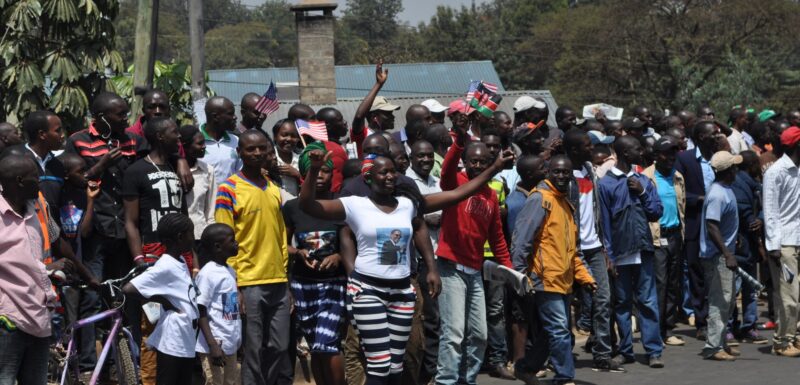Oliver Bakewell, Javans Okhonjo Wanga
Whether people are migrating freely in the hope of improving their quality of life or fleeing as refugees to save their lives in the face of persecution, conflict and violence, the movement of people across the world creates both enormous challenges and great opportunities for societies in every continent. The complex set of drivers shaping people’s movements and the large array of stakeholders involved as people leave, pass through or settle in different areas, means that migration and displacement can have profound effects on all parts of society, reaching far beyond the people on the move.
For many years, the greater Horn of Africa has been a region which has been sharply affected by huge volumes of displacement; it has also seen large levels of international migration, both within the region and beyond. In 2022, there were over 4.5 million refugees from the greater Horn of Africa – mainly South Sudan, Somalia, Sudan and Eritrea – of whom over 3.5 million had remained in the region. There are even larger numbers of internally displaced persons (IDPs), with almost 10 million in Ethiopia, Sudan, Somalia and South Sudan. Refugees and IDPs are found in nearly every country of the region, with Uganda, Ethiopia and Kenya housing some of the largest populations of refugees found anywhere in the world. In 2022, the United Nations High Commissioner for Human Rights (UNHCR) reported that Uganda had 1.5 million refugees, the third largest number in the world. Alongside these very high levels of displacement, the region has seen large numbers of people migrating across its borders in search of economic opportunity and better lives. According to UN population data, there were about 5.5 million international migrants originating from the region, of whom the majority were living in neighbouring countries or elsewhere in Africa.
In the face of such a complex and large-scale phenomenon, the concept of the whole-of-society (Wos) approach to migration and displacement has become increasingly popular among governments and international organisations working in the region. This approach seeks to involve all stakeholders, from governmental authorities, local communities, civil society organisations, the private sector, international organisations and the people on the move themselves, in order to develop and implement policies, programmes and initiatives. By engaging this wide set of stakeholders in interventions, it is hoped that it will make them more effective in addressing the multiple challenges posed by migration and displacement and at the same time produce more just and equitable outcomes.
The aim of this report is to show how the WoS approach is being implemented in programming on migration and displacement in the Horn of Africa, to identify its benefits and challenges, and to recommend ways in which these lessons can be applied to strengthen the WoS approach in programming. It particularly focuses on the application of the WoS approach in programmes funded by the European Union Emergency Trust Fund (EUTF) for stability and addressing root causes of irregular migration and displaced persons in Africa.
The study is based on a review of the literature, including project and policy documents, reports and evaluations and academic articles, alongside a limited set of ten key informant interviews, with respondents from government, the UN, international and national NGOs and community organisations. We make no claim of having a representative sample of respondents, nor have we attempted to undertake a systematic sweep through all the possible literature. Our reading and discussions suggest that there is limited literature focusing on the WoS approach. It tends to be mentioned obliquely or in passing. This puts the task of a comprehensive review beyond our reach, as it would involve trying to pick up hints and suggestions of the WoS approach within a huge body of material, like looking for a needle in haystack. Instead, for the purpose of this report, we have focused on a few examples, which provide some valuable insights.
In what follows, we begin by outlining the main features of the approach, before discussing how and why it has been widely taken up as part of policy frameworks and programming on migration and displacement. The review will then draw on examples from the greater Horn of Africa to illustrate the implementation of the approach in practice. This is followed by a discussion of its potential benefits, the extent to which it offers anything new, some factors that make it work better and some basic challenges it faces. Finally, the review provides some concluding remarks on the use of the approach in the Horn of Africa and some recommendations for maximising its benefits.
You will need a PDF reader such as Adobe Acrobat (downloadable from Adobe) to view PDF file(s).
Image source: Emily Onyango, CC BY-SA 4.0
